Those who follow me may have noticed that I have a soft spot for tea (obvious) and for history and when both are mixed, it is pure bliss. And this is what happened to me during my holidays.
I had seen that there was a possibility to go near Lorient, a town in the Southern part of Brittany, famous for being bombed by the Allied air forces because of a massive U-boat base there but less known for being the headquarters of the French East India Companies (its name coming from L’Orient, which means in French The Orient).
And near Lorient, on the other side of the estuary, in Port-Louis, a citadel could be found and within it, the East India Company’s Museum (or Musée de la Compagnie des Indes in French).
To be honest, the citadel was not built by the French but by Spanish (yes I know, what where they doing in Brittany? Let’s say it had something to do with kings, nobles and rebellion). And even today, it looks impressive, even if Vauban, the foremost military engineer of its time, wrote that it was strong but unnecessarily complicated.
Just take a look at it

« La citadelle de Port-Louis ». Sous licence CC BY-SA 3.0 via Wikimedia Commons.
But let’s get back to what brought me there: history, tea and the East India Company.
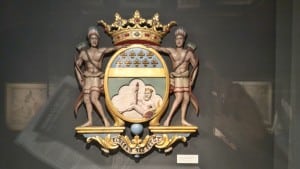 The French East India Company’s coat of arms
The French East India Company’s coat of arms
The motto reads Florebo quocumque ferar (“I will flourish wherever I will be brought”), something quite in line with the spirit of the French monarchy of that time.
Speaking of which, the first company was founded by no other than Louis XIV.
 Founding declaration of the French East India Company
Founding declaration of the French East India Company
I said first company as it is not well known that there were 3 different companies over the under 131 years it existed : the French East India Company from 1664 from 1719 (having lost its monopoly in 1682), the Companies of the Indies (Compagnie perpétuelle des Indes) from 1719 to 1769 (when the French King made its debt a public one after it had survived a financial bubble, a war, the lose of all its holdings in Asia but not the lack of confidence of Choiseul, the “Prime Minister”) and then the French East India and China Company from 1786 to 1795 falling to the Reign of Terror and ending in a financial scandal.
Jean-Baptiste Colbert and John Law, two Statesmen behind the first Companies
What the company lacked was a proper base in France and the first one was Port-Louis (you know the place where you can see the citadel above) with some land given on the other side of the roadstead where the Company first put some slipways. In 1675, its base of Le Havre being too exposed to Dutch attacks, the Company transferred its activities on the other side of the roadstead, which lead to a development of the town of Lorient where the main activities where soon relocated.
 A view from Lorient and all the buildings needed to support the Company activities and fleet
A view from Lorient and all the buildings needed to support the Company activities and fleet
Speaking of which, let’s have a look at the different trips and those built to make them.
Two maps of Asia
The different routes taken by the ships
How long did it take?
For a trip to China, the ships would leave in January-February and get there in August-October before leaving with goods in December-January and come back in July-August, a 19 months trip.
For a trip to India, all would begin in March-April and end in July-August of the following year, a 17 months trip.
Over the 15 years, a ship could be expected to survive, it could only make 7 or 8 trips. 15 years is a long time if you take into account the storms, the wars, the pirates…, even for ships built with care.
Three different ships
If you take a closer look at the ship on the upper left side, you will see cargo: porcelain, silk, spice and tea.
I know you were thinking “when will he at last speak of tea.” I am sorry to say that tea was only one good among others as you will see.

 Coffee, spice and tea, the names of the big Game
Coffee, spice and tea, the names of the big Game
But these exchanges, even if they were regulated on both sides, provided an exchange of technologies and cultural goods.
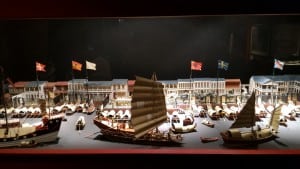 A view from the European legations in Canton during the 19th century (the white flag was the French flag at that time)
A view from the European legations in Canton during the 19th century (the white flag was the French flag at that time)
 A Chinese shop full with tea for Europe
A Chinese shop full with tea for Europe
Items from the VOC
And the jewel of the collection, at least from my point of view, teaware, all kind of teaware with different themes and inspirations: Asian landscapes or people, European ones, stories from the mythology, libertine ones…
You will see some of them below.
A tea box from the 19th century
A small tea box from the 19th century, following a model available since the end of the 18th century






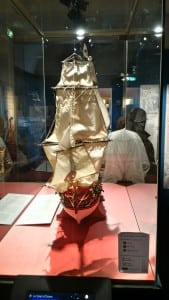


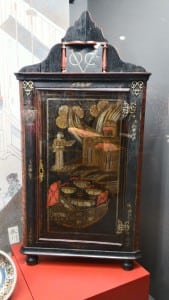








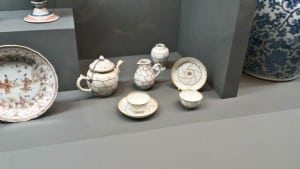


Looks like a nice and interesting place 🙂
It was and I learned a lot about the trades, colonies and the companies.